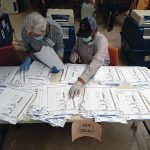
Reporter’s Notebook | The Navajo Times: its most impactful stories in history
By Nicholas House
Navajo Times
The Navajo Times has chronicled the triumphs and trials of the Diné for over six decades.
Founded in 1960 as a tribal newsletter, it evolved into a feisty independent newspaper that often challenged those in power. Through fearless journalism, the Navajo Times has not only informed Navajo citizens but also sparked changes in tribal governance, exposed injustices, and brought Navajo issues to national attention.
Below is a detailed look at the single most significant story ever published by the Navajo Times, followed by a broader list of other influential stories. Each exemplifies the paper’s outsized impact on the Navajo Nation and, at times, far beyond.
The biggest story: exposing the Peter MacDonald Sr. scandal (1987–1989).
The Navajo Times’ most consequential reporting was its investigation into former Chairman Peter MacDonald’s alleged corruption in the late 1980s, culminating in his removal and an overhaul of Navajo governance.
In 1987, MacDonald – a dominant Navajo leader for four terms – persuaded the Tribal Council to purchase the 491,000-acre Big Boquillas Ranch for $33.4 million. Navajo Times reporters got wind of “kickbacks and bribes” tied to the deal. Their inquiries (alongside federal probes) blew the scandal wide open: the U.S. Senate launched hearings in 1988, and the Navajo Tribal Council placed MacDonald on leave. MacDonald refused to relinquish power, igniting a violent riot at tribal headquarters in July 1989 that left two dead. Within months, MacDonald was formally ousted and later convicted in tribal and federal courts of bribery, fraud, and related crimes.
The fallout from this reporting was enormous for the Navajo Nation. In 1989 the Council radically restructured the government to prevent such concentrated power again, replacing the all-powerful chairman’s office with a more balanced system – a tribal president (with reduced authority) and an independent speaker of the Council. This fundamental change was directly prompted by the MacDonald scandal and the transparency the Navajo Times helped bring. Years later High Country News noted MacDonald’s ranch deal was the “overreach” that precipitated his demise, and it was a Navajo Times reporter’s tip that sparked the investigation in the first place.
Equally significant, this saga tested and ultimately affirmed the importance of a free press in Navajo country. MacDonald had long viewed the Navajo Times as a thorn in his side. He fired critical editors in the 1970s and even shut down the paper – the Navajo Times TODAY – on Feb. 19, 1987, in an attempt to silence its criticism. (Five, armed Navajo police officers padlocked the Navajo Times offices that day, dismissing virtually the entire staff just hours before press time. “We wanted to write our own obituary if we could get the final edition out,” recalled then-managing editor, the late Monty Roessel, “but then the police walked in and … told us to get out.”)
This brazen act of censorship backfired. The closure drew national condemnation and spotlighted the lack of press freedom in Navajo governance. Within months, the tribal government allowed the Times to resume publishing, and its journalists redoubled their scrutiny of MacDonald’s administration. Their persistence paid off in exposing the Big Boquillas deal and other abuses. The New York Times, in fact, later described the Navajo Times as an “aggressive newspaper” whose investigative stories helped topple MacDonald’s successor as well – a testament to the precedent set during the MacDonald affair.
In sum, the Navajo Times’ dogged reporting on MacDonald’s corruption stands as its most impactful story ever. It directly led to the downfall of the Navajo Nation’s most powerful leader, ushered in governmental reforms, and demonstrated the critical role of a free press in holding leaders accountable. The episode forever altered Navajo politics and also signaled to other tribes and the broader public that no one – not even a revered war hero and four-term tribal chairman – was above the law.
Other landmark stories covered by the Navajo Times: beyond the MacDonald investigation, the Navajo Times has produced numerous influential stories that left a deep imprint on the Navajo Nation and resonated beyond tribal borders. Below are some of the most significant.
1.
The resignation of Navajo President Albert Hale (1998). In the late 1990s, the Navajo Times turned its sights on Hale, unearthing a web of ethical and legal violations. In January 1997, Navajo Times reporters Marley Shebala and Editor Tom Arviso Jr. broke the taboo of “private matters” by publishing an explosive interview with first lady Regina Hale, who revealed the president’s extramarital affair and alleged domestic strife within the first family.
The story “landed with concussive force,” as the Los Angeles Times later wrote – causing an uproar in the tribal government. Council delegates, furious that the president had brought dishonor to the office, pressured Hale to take a leave of absence to “straighten out family matters.” The Navajo Times did not stop there: Arviso and his team doggedly investigated Hale’s use of tribal funds, uncovering an audit showing “many violations” – over $147,000 in travel expenses with numerous improper charges. Week after week, the paper ran front-page updates on the scandal, from Hale surrendering his tribal credit card and having his salary docked, to his attempts to fire those who cooperated with the press. Hale retaliated by attacking the Navajo Times’ credibility and even tried (unsuccessfully) to remove Arviso, igniting a dramatic public showdown between the Navajo presidency and the free press.
The relentless coverage paid off. By February 1998, facing a 50-count tribal indictment for bribery, fraud and misuse of funds, Albert Hale resigned rather than stand trial. He became the second Navajo leader within a decade to leave office under a cloud of corruption charges. Tribal prosecutors credited the media exposure for helping bring Hale to justice.
As one report noted, “the Navajo Times … printed the (evidence) in full, publishing 17,500 copies in time for it to hit newsstands as Hale spoke” to the ethics committee. The New York Times praised the Navajo Times again as an “aggressive newspaper” whose investigative stories “led to the resignation” of Hale.
This saga cemented the Navajo Times’ reputation as a fearless watchdog. It prompted new ethics reforms and was a powerful demonstration that even the Navajo Nation’s highest elected official would be held accountable by an independent press.
Hale himself acknowledged the parallel to 1989, saying he resigned to avoid “the agony” of another Navajo political turmoil. The Hale investigation thus stands as one of the Navajo Times’ proudest moments – a case where journalism directly provoked a house-cleaning at the top of the tribal government.
2.
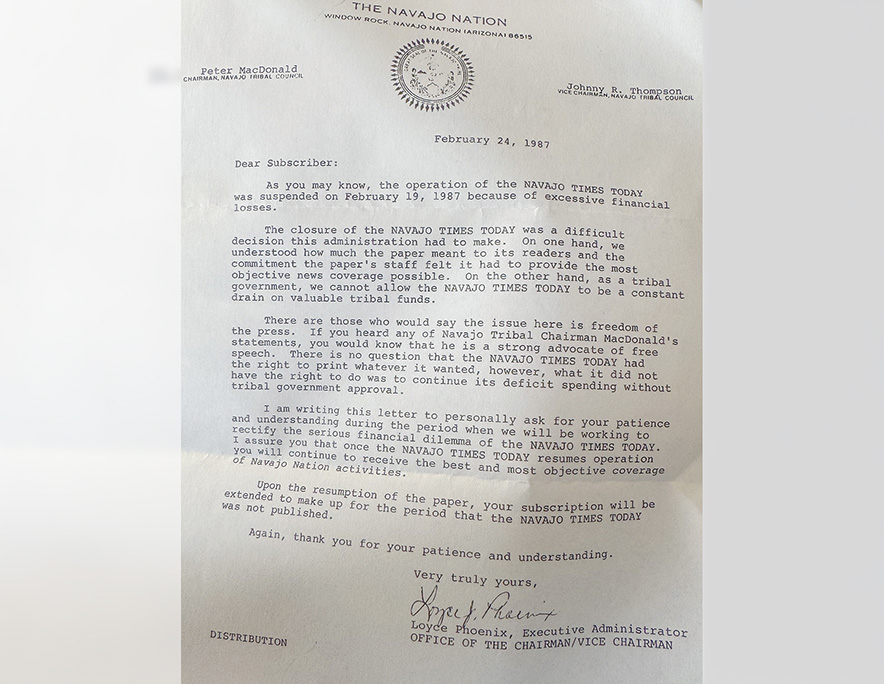
Navajo Times | Krista Allen
A letter to Navajo Times TODAY subscribers explains that the paper was suspended on Feb. 19, 1987, because of “excessive financial losses.” The Navajo Times TODAY was shut down for its reporting and editorial by Mark Trahant, Monty Roessel and George Hardeen.
Press freedom battle. The 1987 Navajo Times shutdown and rebirth. One of the Navajo Times’ most influential “stories” was, in fact, about itself. This was the 1987 confrontation with MacDonald over press freedom, briefly touched on above.
When MacDonald abruptly shut down the Navajo Times TODAY in February 1987 – ostensibly over budget issues, but widely seen as retaliation for the paper endorsing his opponent Peterson Zah – it sparked a watershed moment for Native American journalism.
The shutdown drew widespread outrage. The Washington Post and other national outlets covered it as “the death of a daily newspaper” and a stark reminder that basic civil liberties were still tenuous in Indian Country.
The entire Navajo Times staff was escorted out by armed police, silencing Navajo Nation’s primary news source at a critical time. Navajo citizens and leaders alike were alarmed. “We don’t know what is going on. Nobody reports the decisions of the Council,” one tribal councilman lamented during the shutdown.
In hearings before the U.S. Commission on Civil Rights, MacDonald’s actions were condemned as an abuse of power that left the tribe “unaccountable to its members.”
This incident, however, became a rallying point that ultimately strengthened the Navajo free press. After a few months, MacDonald allowed the Times to resume (under close watch), and by 1988 Tom Arviso Jr. – one of the journalists MacDonald had tried to muzzle – was appointed editor. Arviso and his team gradually rebuilt the paper’s editorial independence through the 1990s. They endured bomb threats, political pressure, and attempts at censorship (as seen during the Hale saga).
Finally, in 2004, the Navajo Times achieved full financial and editorial independence from the tribal government, incorporating as an independent company owned by the Navajo people rather than the Council.
“It’s not the government that owns the paper,” Arviso later said. “It’s the Navajo people.” This hard-won freedom has had broad impact: the Navajo Times became a model for other tribal newspapers in pushing for independent press ordinances and transparency.
The 1987 shutdown saga, painful as it was, ultimately galvanized support for the idea that a free press is essential to Navajo democracy, an idea now embedded in the Navajo Nation’s law (the Diné Bill of Rights guarantees freedom of the press). In short, the Navajo Times’ stand in 1987 is an influential story in its own right, one that ensured the paper could continue publishing the truth in the face of power, and inspiring similar fights for press freedom across Indian Country.
3.
“Poison in the Earth: The 1979 Church Rock Uranium Spill.” The Navajo Times has long given voice to environmental and health crises on Navajo lands, none more significant than the Church Rock uranium tailings spill of 1979.
On July 16, 1979, a dam holding toxic uranium mill waste on Navajo land near Church Rock, New Mexico, collapsed. The breach released 1,100 tons of radioactive mill sludge and 94 million gallons of contaminated wastewater into the Puerco River, which flowed through Navajo communities.
It remains “the single largest release of radioactive material in U.S. history,” even larger than the Three Mile Island accident that same year. Yet at the time, the disaster received scant national attention. The Navajo Times was one of the first outlets on the ground, reporting the accounts of locals like Church Rock Chapter Vice President Robinson Kelly, who awoke to a “foul odor” and yellow-colored water rushing down the wash.
The paper documented the immediate aftermath: livestock and sheep covered in yellowcake sludge, villagers reporting burns and lesions on their legs after wading through the flood. In the weeks and years that followed, Navajo Times journalists doggedly kept the spotlight on Church Rock and the broader uranium contamination nightmare on Navajo Nation. It published personal stories of cancer and illness (such as families who lost multiple members to mysterious cancers) and exposed the negligence of federal agencies that failed to aid the mostly Navajo victims.
This sustained coverage over decades turned Church Rock from a forgotten local spill into a symbol of environmental injustice.
The impact of the Navajo Times’ reporting on this issue has been profound. It helped pressure tribal and federal officials to begin cleanup (a process still ongoing) and informed Navajo leaders’ decision to ban uranium mining on Navajo Nation lands in 2005, to prevent a repeat of such tragedies. The Times also educated its readership about health resources and legal rights, contributing to efforts like the 1990 Radiation Exposure Compensation Act (which provided restitution to Navajo uranium miners and downwinders).
On the 30th anniversary of the spill in 2009, then-reporter Marley Shebala’s Navajo Times retrospective “Poison in the Earth” not only remembered the disaster but also galvanized a new generation of activists.
Over 150 people joined a commemoration and protest walk that year, many carrying banners reading “No More Yellowcake” in reference to the uranium waste. As one local resident told the Navajo Times, “I have to be here … to support” the fight for a full cleanup. By continually shining a light on Church Rock, the Navajo Times ensured that the victims’ stories were not forgotten. The paper’s coverage elevated Navajo environmental health issues onto the national stage as an early case study of environmental racism, influencing researchers, policymakers, and media narratives about the legacy of uranium mining on Indigenous lands.
4.
Council slush funds scandal and government reform (2009–2010). The Navajo Times has never hesitated to hold the entire government – not just top executives – accountable. In the late 2000s, it exposed rampant misuse of tribal funds by Navajo Nation Council delegates, a scandal that ultimately forced a historic downsizing and reform of the legislature.
For years, delegates had access to discretionary “slush funds” and spent lavishly on perks for themselves. The Navajo Times reported one especially galling incident in 2007: the Council quietly voted to spend $50,000 to buy gold rings for all 88 delegates as mementos of their service. This story outraged Navajo citizens, many of whom saw it as an egregious abuse in a time of widespread poverty on the reservation.
The paper followed up with more investigations, uncovering that some lawmakers were taking expensive “fact-finding” trips to Las Vegas, Nevada, and Hawaii with dubious benefit to the Navajo Nation. Spurred by these reports, grassroots pressure mounted to rein in the Council.
In 2009 Navajo voters went to the polls and overwhelmingly approved two initiatives: one to shrink the Council from 88 delegates to just 24, and another to grant the Navajo president a line-item veto over spending. These reforms were aimed at curbing delegate excesses and restoring balance in the wake of the slush fund scandal.
However, the sitting Council attempted to nullify the public’s vote by invoking an old law requiring a super-majority of all chapters for such changes. This prompted a constitutional crisis – and once again, the Navajo Times kept the public informed at every turn, reporting on the power struggle between the Council and reformers. In May 2010, the Navajo Nation Supreme Court struck down the Council’s obstruction and ordered that the voter-mandated reforms be implemented.
By 2011, the downsizing of the Council was in effect, representing one of the most significant governmental changes since the MacDonald era.
The Navajo Times’ role throughout was pivotal. Its persistent coverage validated whistleblowers and gave voice to public frustration. One special prosecutor’s investigation eventually charged over 70 former delegates for misusing discretionary funds – a sweeping crackdown that the Times covered extensively (often printing long lists of officials and the amounts they diverted). While the legal process was complex, the outcome was clear: a new era of accountability. As then-editor Arviso noted, the paper’s watchdog reporting helped Navajo voters “slay the monster” of corruption in their own government.
The influence of these stories even extended beyond the Navajo Nation: other tribal nations took notice of how a free press and informed public could drive democratic reforms. In short, the Navajo Times’ exposure of Council misdeeds not only led to individual prosecutions but also sparked structural changes to Navajo governance, making this one of its most influential chapters.
5.
Covering the COVID-19 Crisis (2020). In modern times, the Navajo Times again proved its critical importance during the COVID-19 pandemic, which hit the Navajo Nation extraordinarily hard.
In the spring of 2020, the Navajo Nation became one of the worst Covid hot spots in the world. By May 2020 Navajo Nation leaders announced it had “the highest per capita COVID-19 infection rate in the United States, outpacing hot spots like New York,” with nearly 4,800 cases among roughly 173,000 residents and over 150 deaths.
This grim milestone garnered international headlines and, as Al Jazeera noted, “highlighted centuries of neglect” in infrastructure and health care for Native communities. Throughout this crisis, the Navajo Times was a lifeline of information for Navajo citizens and an essential source for outside media. The newspaper devoted extensive resources to daily Covid updates, publishing the latest case counts by community, public health orders, and safety guidance in both English and Navajo. Recognizing the gravity of the situation, the Navajo Times made all its pandemic coverage free to the public online as a public service. Reporters like Arlyssa Becenti, Donovan Quintero, and Krista Allen filed stories from the frontlines – from hospitals in Gallup and Shiprock struggling with capacity, to uplifting profiles of recovered patients and volunteers delivering water and food to families in lockdown.
The impact of this coverage was multifaceted.
Locally, it kept Navajo citizens informed in real time, countering dangerous misinformation and helping leaders communicate life-saving measures (such as weekend curfews and the mask mandate). Former Navajo Nation President Jonathan Nez frequently cited Navajo Times reports in his town hall updates, and the paper’s website became a go-to hub for resources on testing and vaccination.
Beyond the Navajo Nation, Navajo Times stories and data were picked up by national outlets – often with credit – bringing broader attention to the crisis. For example, the Navajo Times’ tracking of per-capita cases helped NPR, Forbes, and others illustrate that if the Navajo Nation were a state, it would have had the highest Covid infection rate in the country at that time.
This heightened awareness contributed to an outpouring of support: the U.S. Congress and public donors directed hundreds of millions of dollars in relief to Navajo communities, partly in response to the situation the Navajo Times vividly described.
Long-term, the Navajo Times’ pandemic reporting has amplified calls to fix the underlying inequities (like lack of running water in 30% of Navajo homes) that worsened the outbreak. In essence, the Navajo Times fulfilled its mission during COVID-19 by informing and uniting the community, and by ensuring the Navajo story was told to the world with accuracy and empathy. This chapter reinforced the paper’s influence on both a local and global scale, solidifying trust in the Navajo Times as “the voice of the Navajo Nation” in times of crisis.
From investigating high-level corruption to exposing environmental disasters and public health emergencies, the Navajo Times has repeatedly proven the power of journalism to drive change.
Its most monumental story – the exposure of Peter MacDonald’s misdeeds – changed the course of Navajo history, but the paper did not stop there. Time and again, the Navajo Times has shone light into darkness: forcing out corrupt officials, defending free press rights, fighting for environmental justice, reforming institutions, and saving lives with information.
“We’re not the government’s mouthpiece – we serve the people,” longtime editor Tom Arviso Jr. has emphasized. Indeed, the Navajo Times’ legacy of influence is ultimately measured in the empowerment of the Navajo people themselves. Each story above prompted concrete outcomes – new laws, leadership changes, national awareness, and community action – that have strengthened the Navajo Nation.
In the words of one veteran Navajo Times reporter reflecting on these battles, “You can have an outer shell that nothing bothers you, but deep inside … this fight is good versus evil.”
For 60-plus years, the Navajo Times has fought the good fight, and its most impactful stories have left an indelible mark on Diné history and on the broader narrative of Native American self-determination.

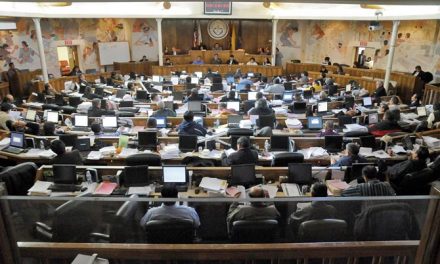
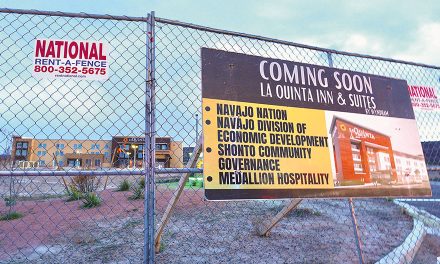

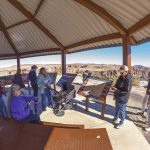



 Highway 264,
Highway 264, I-40, WB @ Winslow
I-40, WB @ Winslow